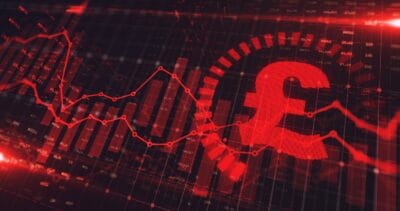Income investors generally prefer stocks with higher dividend yields, but a very high yield is often seen as a warning sign that the dividend may soon be cut. A higher than average dividend yield is not always better, and so it is important to select high quality stocks with reliable cash flow generation. To distinguish between dividend traps and genuine bargains we should look out for sector-based or cyclical trends, dividend cover and the outlook for earnings.
With this in mind, should you buy Royal Dutch Shell (LSE: RDSA)(LSE: RDSB), Ashmore Group (LSE: ASHM) and MedicX Fund (LSE: MXF)?
Earnings slump
If we ignored Shell’s recent earnings slump, then the oil giant would look like an amazing dividend stock. The company has never cut its dividends since the end of the second world war, benefits from a 5-year average gross margin of nearly 17% and has very low levels of indebtedness.
Passive income stocks: our picks
Do you like the idea of dividend income?
The prospect of investing in a company just once, then sitting back and watching as it potentially pays a dividend out over and over?
If you’re excited by the thought of regular passive income payments, as well as the potential for significant growth on your initial investment…
Then we think you’ll want to see this report inside Motley Fool Share Advisor — ‘5 Essential Stocks For Passive Income Seekers’.
What’s more, today we’re giving away one of these stock picks, absolutely free!
Unfortunately, we can’t ignore Shell’s declining profitability, as the signs point to an uncertain future. Shell has already had to conserve cash by freezing its quarterly dividend at $0.47 per share and re-introduced its Scrip Dividend Programme in 2015. Low oil prices, which caused underlying annual earnings to fall 53% over the past year, is likely to persist for longer than expected and possibly fall to as low as $10 per barrel.
To finance the gap between operating cash flow and spending on capex and dividends, Shell has resorted to selling assets and raising new debt. Net gearing remains low, at 14.0%, compared to 12.2% last year. But, this has only been made possible by large-scale asset sales (which helped bring down oil production by 4% to 2.95m barrels of oil equivalent per day) and because Shell’s costly acquisition of BG Group has yet to be completed. The BG deal will do little to help Shell’s cash flow either, as BG’s annual free cash flow (before dividend payments) in 2015 was a negative $2.4bn.
So, unless oil prices rebound significantly, Shell’s 8.6% dividend yield does not seem sustainable for too much longer.
Massive outflows
Like its bigger rival Aberdeen Asset Management, Ashmore Group is suffering from massive fund outflows as investors cash out of investments in emerging markets. Assets under management have fallen 22.4% over the past year, as a result of a combination of investor outflows and declining asset values.
Net outflows have slowed recently, but there a few signs that a reversal will be soon be due. Fundamentals in emerging markets are beginning to look more attractive but investors are maintaining a cautious stance in fear of further interest rate hikes in the US and the constant stream of disappointing economic data.
With assets under management being regarded as an important indicator of future profits in the business, Ashmore’s long term earnings outlook is unimpressive. Analysts expect Ashmore will see earnings fall 23% in this year, and this should mean dividend cover is expected to decline to 0.9x. With earnings unable to cover dividends, Ashmore’s 7.7% dividend yield is at great risk.
Well positioned
MedicX Fund seems like a better buy. The closed-ended investment company focusses on primary healthcare properties (mostly GP practices and pharmacies), and thus benefits from the non-cyclical nature of the healthcare sector.
Shares in the fund currently trade at a 21% premium to its net asset value, which was valued at 70.8p per share at the end of 2015. The fund’s premium may seem expensive, but it is actually lower than the 12-month historical premium of 34%. Still, pessimists would argue that the commercial property sector in the UK is nearing its peak and risks of a cyclical downturn could mean the premium may erode further.
Whilst there are some signs of overheating in the property markets, there are many reasons to be optimistic. The fund is somewhat shielded from any potential downturn, as almost 90% of rental income comes from NHS reimbursable sources and a growing proportion of tenancies have inflation-linked rent review clauses. What’s more, robust growth in healthcare demand and slow supply growth should mean it is well positioned to gain from steadily rising rental income and capital growth.
The fund currently pays a quarterly dividend of 1.475p per share, giving it a 6.9% dividend yield and an underlying dividend cover of 68.0%.







